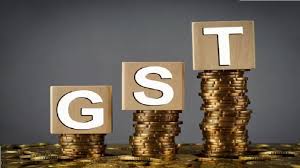
In July 2024, India’s Goods and Services Tax (GST) collections rose by 10.3% to ₹1,82,075 crore, marking a significant increase from ₹1,65,105 crore in July 2023. This uptick highlights strong domestic consumption and economic resilience.
Key Figures and Trends
July 2024 Collection: ₹1,82,075 crore, a 10.3% year-on-year increase.
Year-to-Date 2024: Total GST collections stand at ₹7,38,894 crore, up 10.2% from ₹6,70,766 crore in the same period of 2023.
Monthly Records: April 2024 recorded ₹2,10,000 crore, May and June saw ₹1,73,000 crore and ₹1,74,000 crore, respectively.
2023-24 Fiscal Year: Gross GST collections amounted to ₹20,18,000 crore, an 11.7% increase from the previous fiscal year. The average monthly collection was ₹1,68,000 crore, surpassing the previous year’s average of ₹1,50,000 crore.
Economic Impact and Benefits
Positive Trajectory: The rise in GST collections reflects strong domestic demand and import activities, contributing to India’s economic recovery amidst global uncertainties.
Consumer Savings: Recent GST rate adjustments have reduced prices for essentials, saving consumers approximately 4% on monthly household expenses.
GST Implementation and Impact
Introduction: Implemented on July 1, 2017, GST replaced a fragmented indirect tax system, simplifying tax compliance and reducing cascading tax effects.
Key Items: Significant GST rate reductions or zero rates have been applied to mobile phones, refrigerators, and TVs up to 32 inches.
GST Council’s Role
Structure: Chaired by the Union Finance Minister and comprising Finance Ministers of all States, the GST Council oversees the GST framework and addresses tax administration issues.





